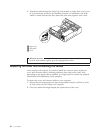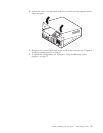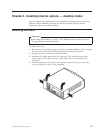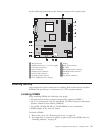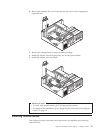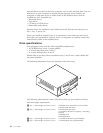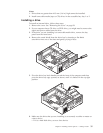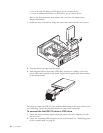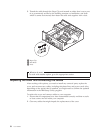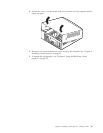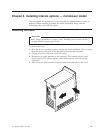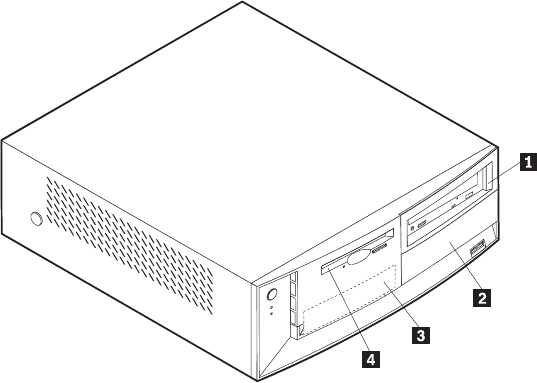
Internal drives are devices that your computer uses to read and store data. You can
add drives to your computer to increase storage capacity and to enable your
computer to read other types of media. Some of the different drives that are
available for your computer are:
v Hard disk drives
v Tape drives
v CD drives or DVD drives
v Removable media drives
Internal drives are installed in bays. Within this book, the bays are referred to as
bay 1, bay 2, and so on.
When you install an internal drive, it is important to note what type and size of
drive that you can install in each bay. Also, it is important to correctly connect the
internal drive cables to the installed drive.
Drive specifications
Your computer comes with the following IBM-installed drives:
v A CD-ROM drive in bay 1 (some models)
v A 3.5-inch hard disk drive in bay 3
v A 3.5-inch diskette drive in bay 4
Models that do not have drives installed in bays 1 and 2 have a static shield and
bay panel installed.
The following illustration shows the locations of the drive bays.
The following table describes some of the drives that you can install in each bay
and their height requirements.
1 Bay 1 - Max Height: 41.3 mm (1.6 in.) CD-ROM drive (standard in some models)
5.25-inch hard disk drive
2 Bay 2 - Max Height: 41.3 mm (1.6 in.) 5.25-inch hard disk drive
3.5-inch hard disk drive (requires a mounting
bracket)
CD-ROM drive
DVD-ROM drive
3 Bay 3 - Max Height: 25.8 mm (1.0 in.) 3.5-inch hard disk drive (preinstalled)
4 Bay 4 - Max Height: 25.8 mm (1.0 in.) 3.5-inch diskette drive (preinstalled)
34 User Guide



